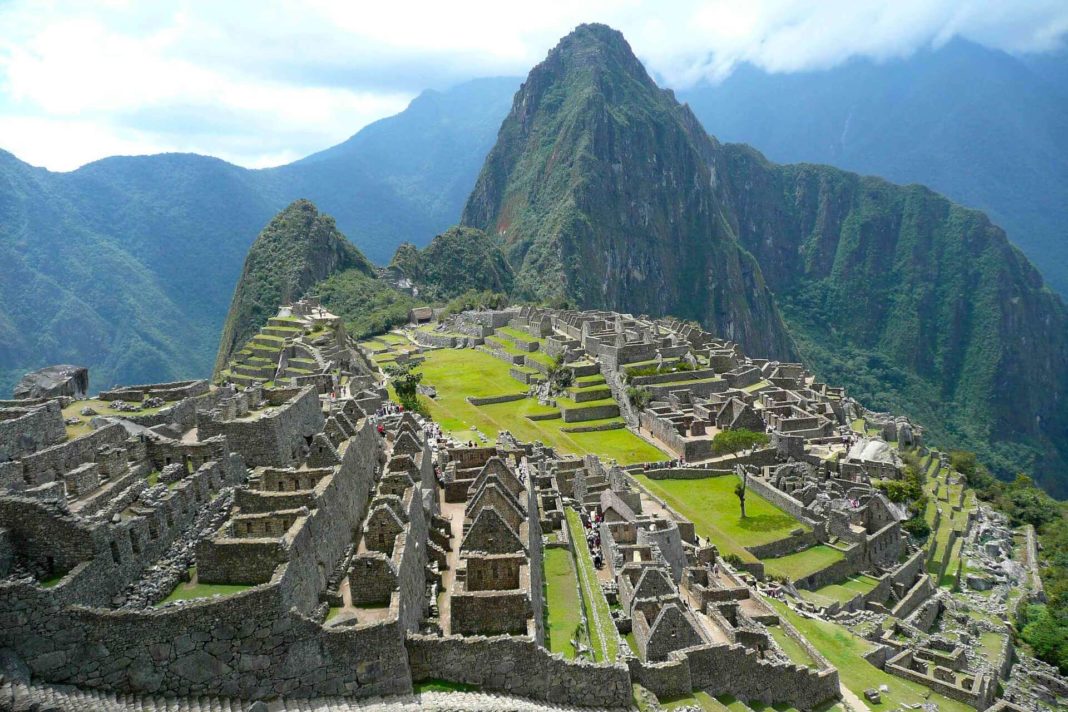Machu Picchu
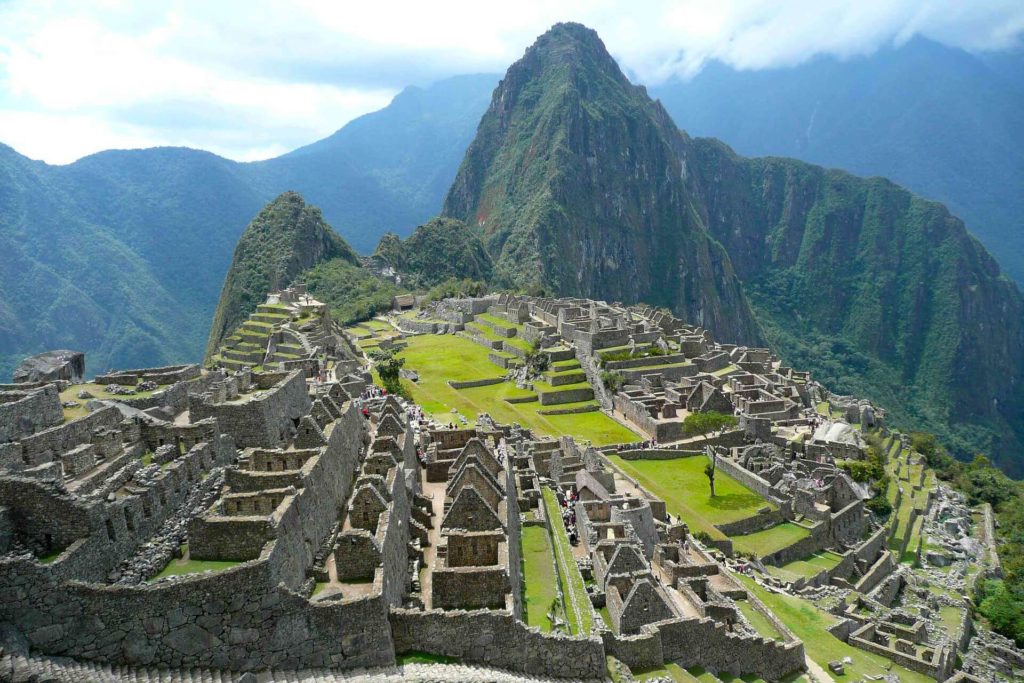
The ruins of the ancient Inca city of Machu Picchu are one of the most impressive sights and a business card of Peru. The surrounding steep slopes and frosted hills make the background particularly dramatic.
The city was officially discovered in 1911 by Hiram Bingham, but it is possible that the first records of the Ancient City of the Incas came from Spanish soldiers around 1500.
You can choose to walk through the jungle or take a train tour starting from Cusco, Ollantaytambo, or Urubamba. Mau Picchu is easily reached by bus from Aguas Calientes, the nearest town.
Most tourists are from June to August, and from 2020 there are new rules regarding tours only with a guide and a specific route to follow.
The Inca Trail
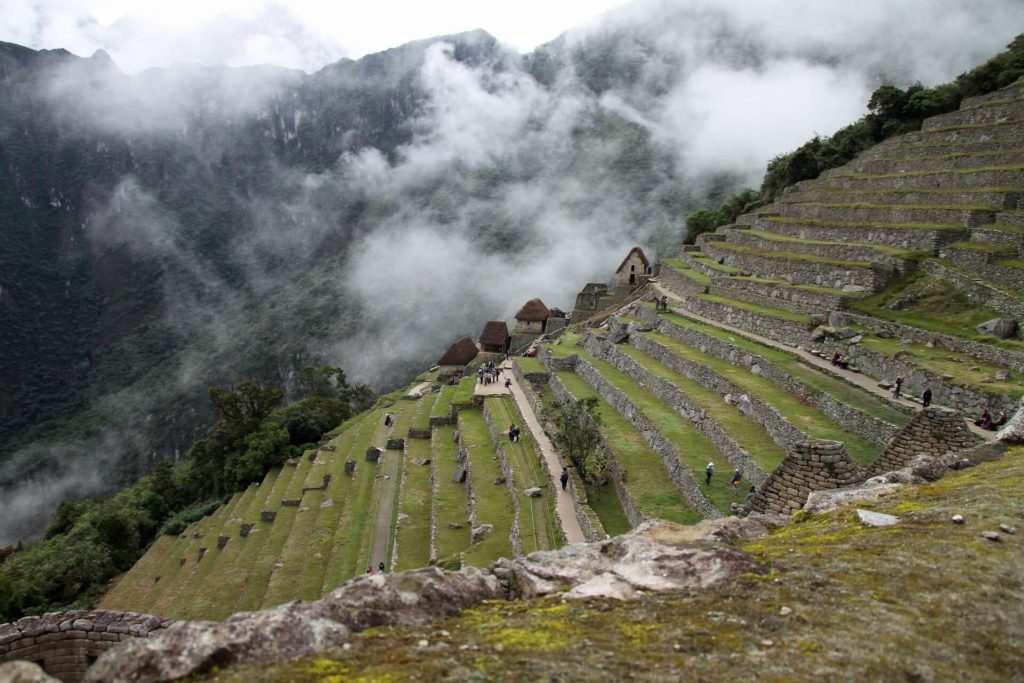 One of the best things to do in Peru if you are a hiking lover is The Inca Trail. The route is quite long and takes about 4 days to cross. And while this may sound pretty scary to most tourists, the view is definitely worth it.
One of the best things to do in Peru if you are a hiking lover is The Inca Trail. The route is quite long and takes about 4 days to cross. And while this may sound pretty scary to most tourists, the view is definitely worth it.
The transition usually starts from km 82 of the Cusco – Aguas Calientes rail line (although there are several other options for starting points) and ends at Machu Picchu. The most difficult part of the transition is the second day, during which you climb a quite steep terrain. Along the way, you will see over 30 ruins left from the time of the Incas.
If the long journey still worries you, some tour agencies offer a shortened transition with the possibility to join for the last 1 or 2 days of the transition. Additionally, you can choose a luggage transfer service.
Cusco’s Architectural Treasures
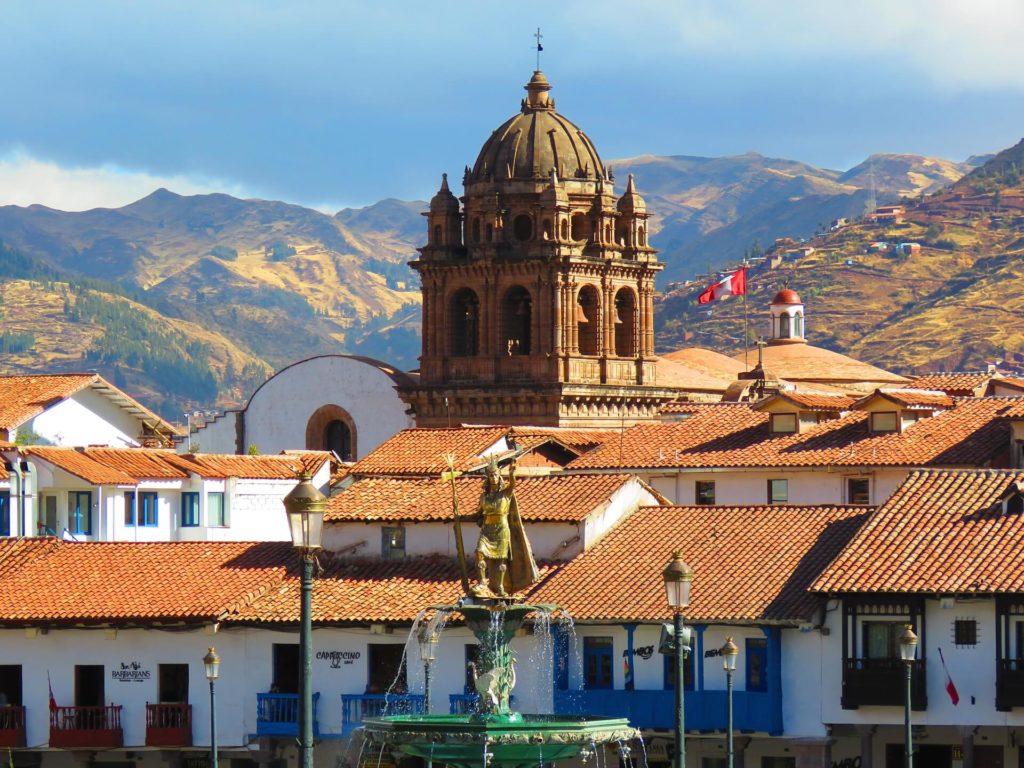 Cusco is under the auspices of UNESCO and is truly rich in architectural and historical finds. The ruins leftover from Inca times served as the basis for most of the local colonial buildings.
Cusco is under the auspices of UNESCO and is truly rich in architectural and historical finds. The ruins leftover from Inca times served as the basis for most of the local colonial buildings.
One of the must-see stops must be the church of Santo Domingo, as well as the Plaza de Armas, from where you can start your tour, find a place for lunch, or a shop with locally produced goods.
Lake Titicaca

One of the most significant Peru landmarks, Titicaca is known not only for its crystal blue waters and surrounding hills and villages but also as the highest navigable lake in the world (with an altitude of 3820 meters).
The lake attracts millions of tourists every year and this leads to the creation of some attractions to acquaint visitors with the way of life, traditions, and culture of the Incas. Such are the artificially created small islands Uros Floating Islands, where you will clearly see the presentation of their way of life and customs. The villages close to the lake, Isla Taquile and Isla Amantani are especially interesting in this direction.
If you want to visit Titicaca, it will probably be easiest to stay in the nearby town of Puno, where there are enough hotels, restaurants, and amenities.
Colca Canyon (Cañon del Colca)
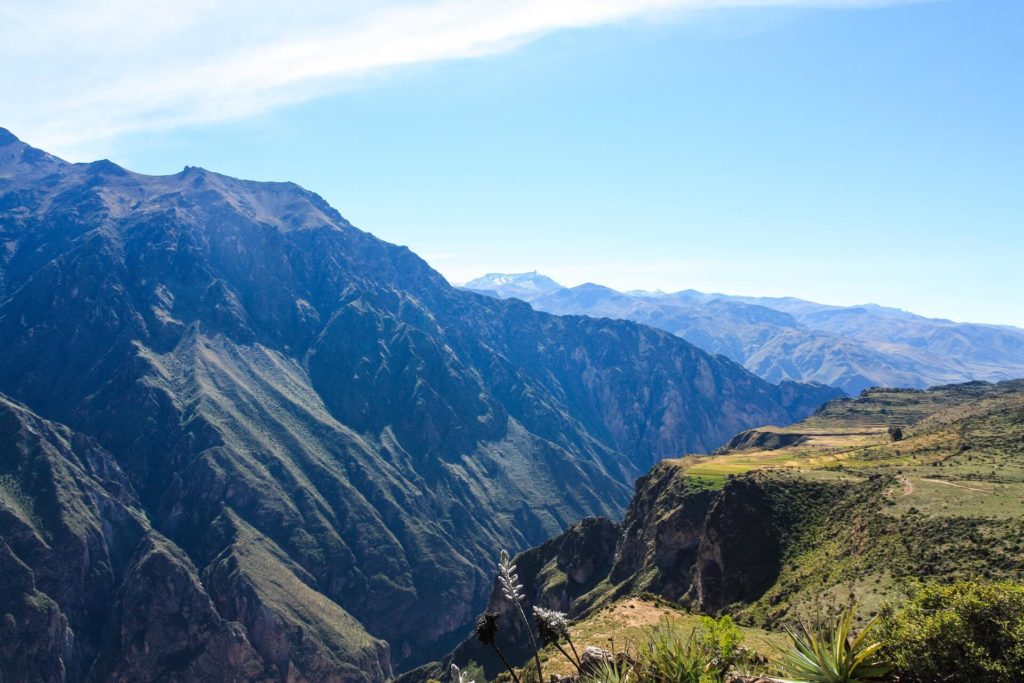 With a depth of 3,400 meters (or twice the size of the Grand Canyon), Colca Canyon is the second deepest canyon in the world after the Cotahuasi Canyon and one of the best tourist attractions in Peru.
With a depth of 3,400 meters (or twice the size of the Grand Canyon), Colca Canyon is the second deepest canyon in the world after the Cotahuasi Canyon and one of the best tourist attractions in Peru.
The canyon was created as a result of volcanic activity, and at its base, there is a river. It is believed that it was home to several ancient tribes, including the Incas. The stone terraces on its walls created in antiquity are still usable today.
The nearest town is Arequipa. However, take more than a day to see the canyon, because even this city is about 4 hours away by car, which makes the road in both directions quite tiring.
Nazca Lines
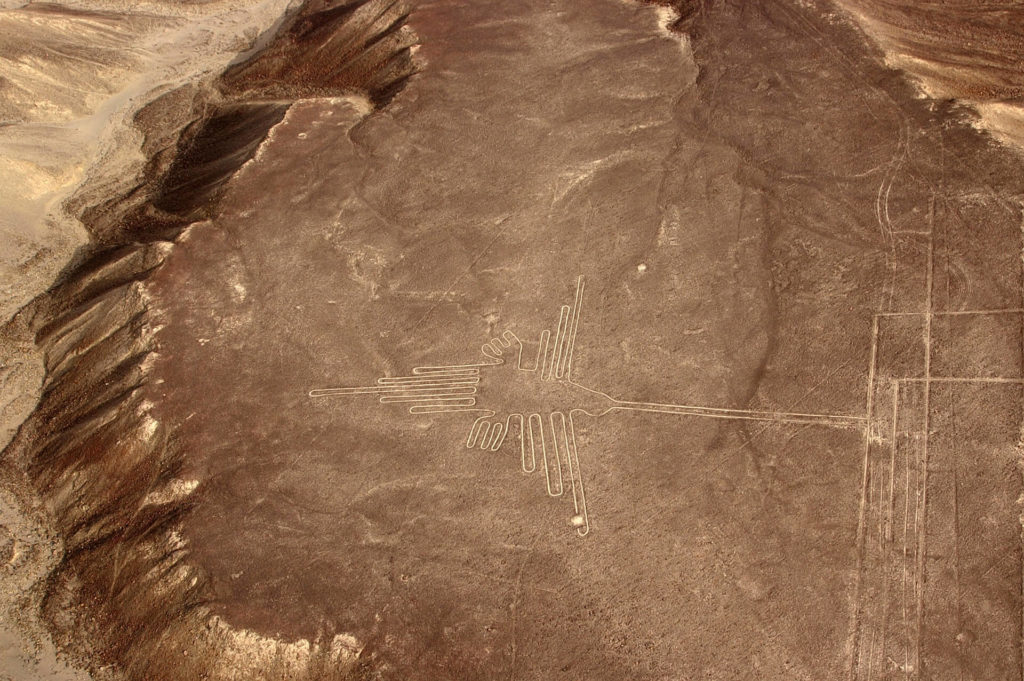 The mysterious lines in the Nazca desert were discovered in the 1920s by accidentally flying planes, which noticed that the lines formed regular geometric shapes and patterns. From the ground, this discovery was impossible because the scale of the lines was too large.
The mysterious lines in the Nazca desert were discovered in the 1920s by accidentally flying planes, which noticed that the lines formed regular geometric shapes and patterns. From the ground, this discovery was impossible because the scale of the lines was too large.
Linens form over 70 images of plants and animals and many geometric shapes. Some areas long as 10 kilometers and cover a total area of hundreds of square meters.
Some of the most notable images are of a reptile (180 m), a condor (130 m), a monkey, a whale, a spider. It is not known how these lines originated, although most people believe they are the product of Paracas and Nazca cultures in ancient times.
It is believed that the images may have been used as an astronomical calendar in ancient times.
Nearby are two more landmarks – Cantalloc Aqueducts (which supplied the area with water in the past) and the Cemetery of Chauchilla (where Nazca remains and mummies are stored).
The Sacred Valley
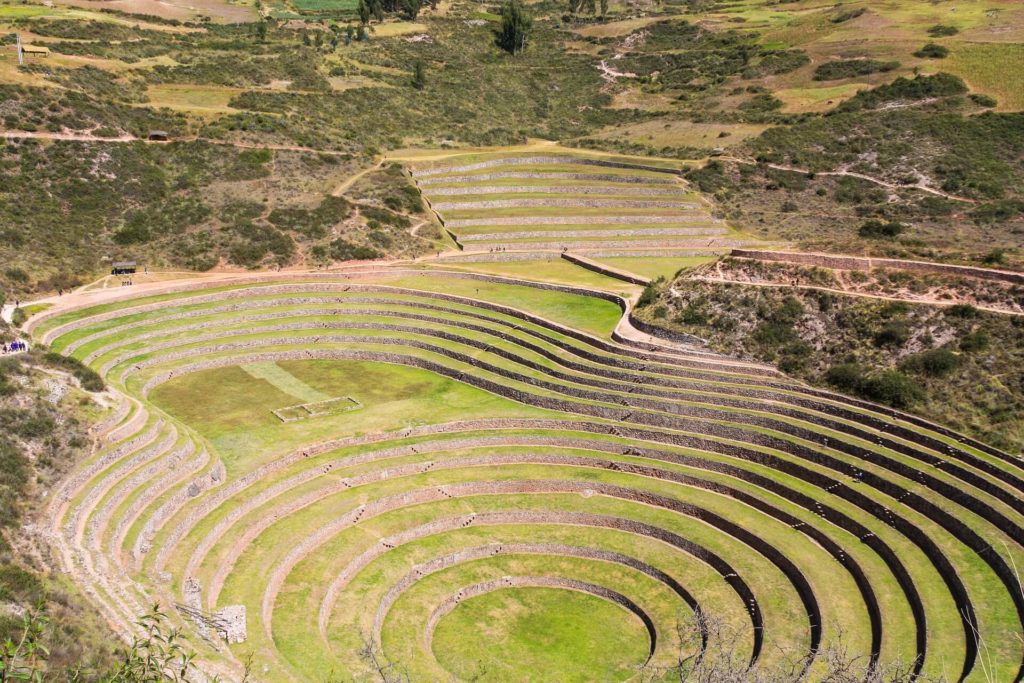 The cities of Pisac, Urubamba, and Ollantaytambo are close to Cusco and are a great choice if you are wondering what to do in Peru. Here you will see many ruins left by the Incas, you will learn a lot about the local way of life and culture, you will be able to visit the local markets.
The cities of Pisac, Urubamba, and Ollantaytambo are close to Cusco and are a great choice if you are wondering what to do in Peru. Here you will see many ruins left by the Incas, you will learn a lot about the local way of life and culture, you will be able to visit the local markets.
One of your must-see stops in this picturesque valley should be Pisac Ruins and the Sunday Market, and if you take a detour you will reach the salt mines of Salinas and the town of Moray, used by the Incas as a test area for their farms.
Arequipa’s Historical City Center
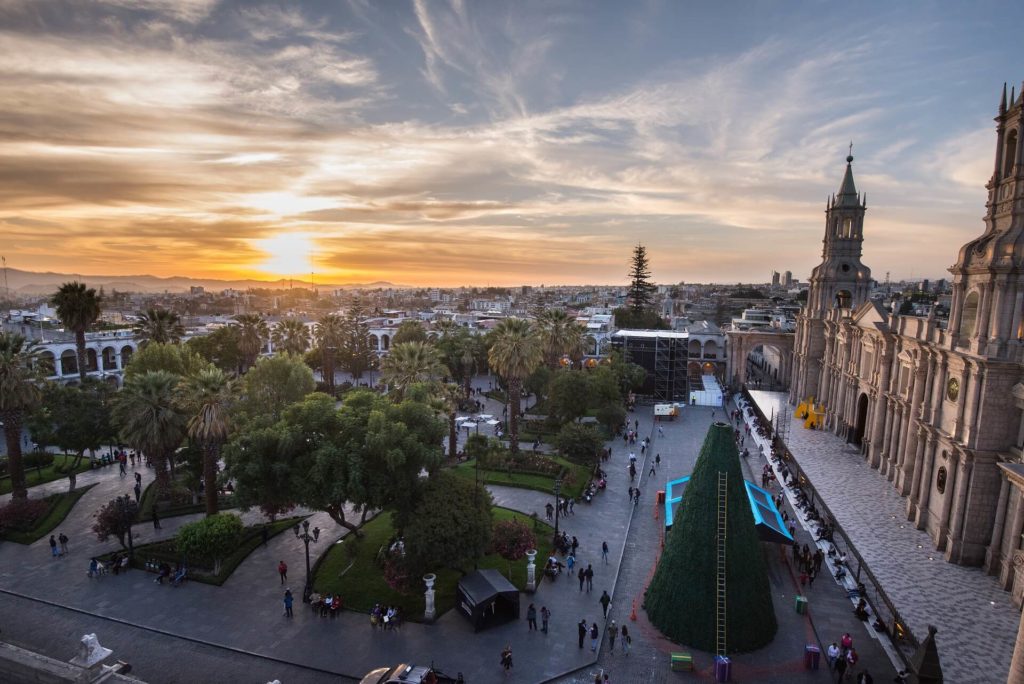 Arequipa is a UNESCO World Heritage Site and is considered the most beautiful city in Peru.
Arequipa is a UNESCO World Heritage Site and is considered the most beautiful city in Peru.
The magic of this town is in the central buildings built of sillar stone. The stone acquires a bright color in the sun, which bears the city’s name White City.
You could stop here on your way to Colca Canyon, which is about a 4-hour drive away.
Puerto Maldonado and the Amazon
Puerto Maldonado is often the starting point for a trip along the Amаzon River. Here you will find a rich variety of wildlife such as monkeys, parrots, piranhas, and exotic plants as well as the humid tropical climate typical of the jungle (unlike other parts of Peru).
Tours usually take from a few days to a week, and the most famous attractions are the Reserva Nacional Tambopata and the Parque Nacional Bahuaja Sonene.
Lima’s Historic Center
 The capital of Peru, Lima, has managed to preserve its historical value and ancient spirit, although many of the originally built buildings from the early 15th century have been destroyed. Its historic center is among the UNESCO sites.
The capital of Peru, Lima, has managed to preserve its historical value and ancient spirit, although many of the originally built buildings from the early 15th century have been destroyed. Its historic center is among the UNESCO sites.
The main attractions you will find around Plaza de Armas. Here is the cathedral, the parliament, the Archbishop’s Palace, and the Casa del Oidor. Continuation of the square is the main pedestrian street filled with shops, restaurants, and entertainment venues.
Ica and the Sand Dunes at
 If you love sand dunes and sports, Ica and Huacachina are some of the most fun things to do in Peru.
If you love sand dunes and sports, Ica and Huacachina are some of the most fun things to do in Peru.
This resort town is located west of Ica and is surrounded by sand dunes up to 1000 meters high. They’re perfect if you want to try sandboarding (similar to snowboarding but on sand).
You can try this activity at any time of the year because the climate is relatively unchanging, dry, and warm.
Pisco and the Ballestas Islands (Islas Ballestas)
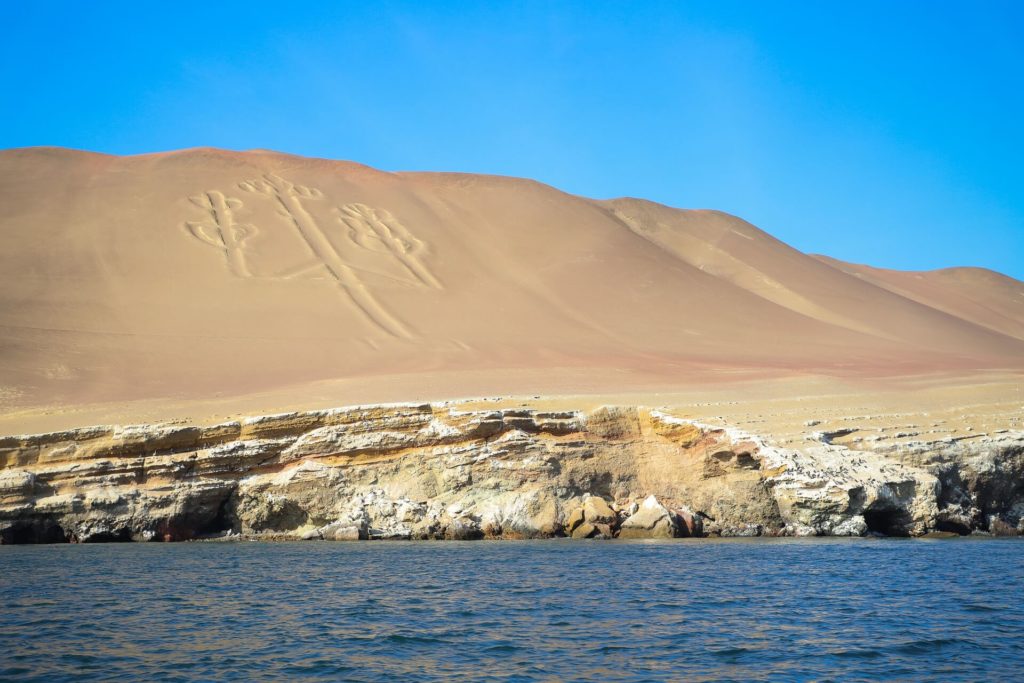 Here is one more of the best tourist attractions in Peru if you are keen on wildlife. Pisco is located about 200 km from the capital Lima and attracts visitors with the nearby Islas Ballestas, where you will find sea lions, penguins, dolphins, and pelicans.
Here is one more of the best tourist attractions in Peru if you are keen on wildlife. Pisco is located about 200 km from the capital Lima and attracts visitors with the nearby Islas Ballestas, where you will find sea lions, penguins, dolphins, and pelicans.
Every day, boats depart from Pisco or the Paracas Peninsula, guiding tourists around the island and leaving them plenty of time to observe wildlife in their natural habitat. The tour takes about half a day.
The other attractions around Pisco are the Paracas Peninsula and the Reserva Nacional Paracas – the longest protected beach in Peru, where you will find a huge variety of wildlife.
Sillustani
 Sillustani is a place near Titicaca, where the ancients Colla people (around AD 600) burned and buried their nobles, their families, and personal belongings in high funerary towers (chullpas). Most of the towers are located on the shores of Lake Umayo.
Sillustani is a place near Titicaca, where the ancients Colla people (around AD 600) burned and buried their nobles, their families, and personal belongings in high funerary towers (chullpas). Most of the towers are located on the shores of Lake Umayo.
This is perhaps one of the most non-traditional tourist attractions in Peru, but it will definitely reveal a lot about the life of the first settlers in these places.
Barranco
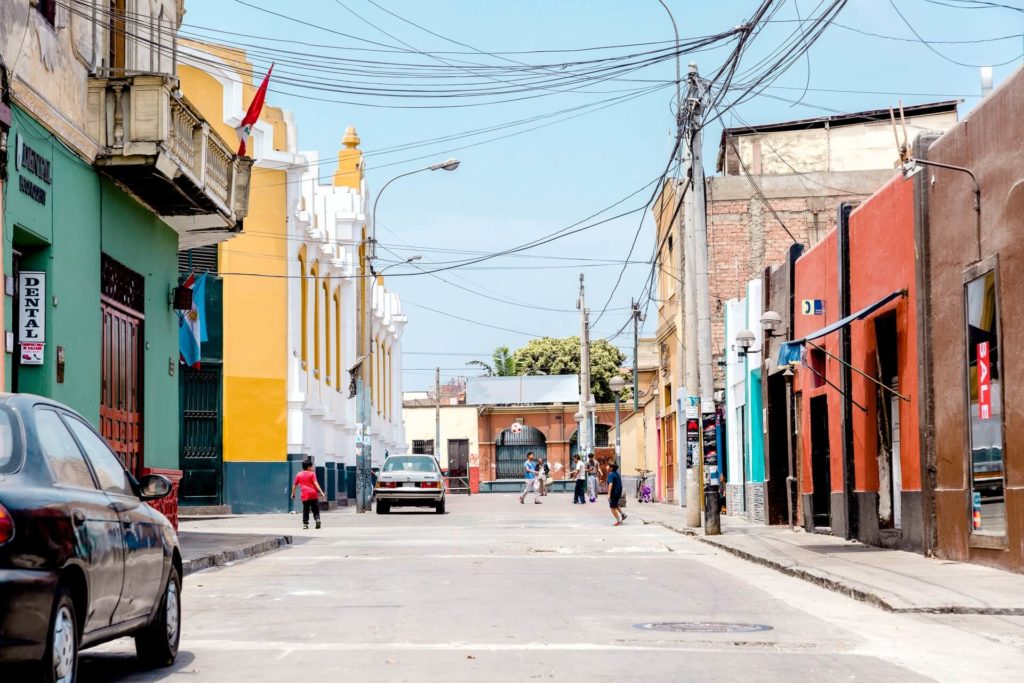 Barranco is a great Peru landmark if you are looking for a little peace and relaxation. Here you will find colorful, colonial-style buildings with narrow streets. Many places offer wonderful views of the ocean.
Barranco is a great Peru landmark if you are looking for a little peace and relaxation. Here you will find colorful, colonial-style buildings with narrow streets. Many places offer wonderful views of the ocean.
The most famous attraction here is Puente de Los Suspiros (Bridge of Sighs). The city is close to the capital Lima.
Cordillera Blanca
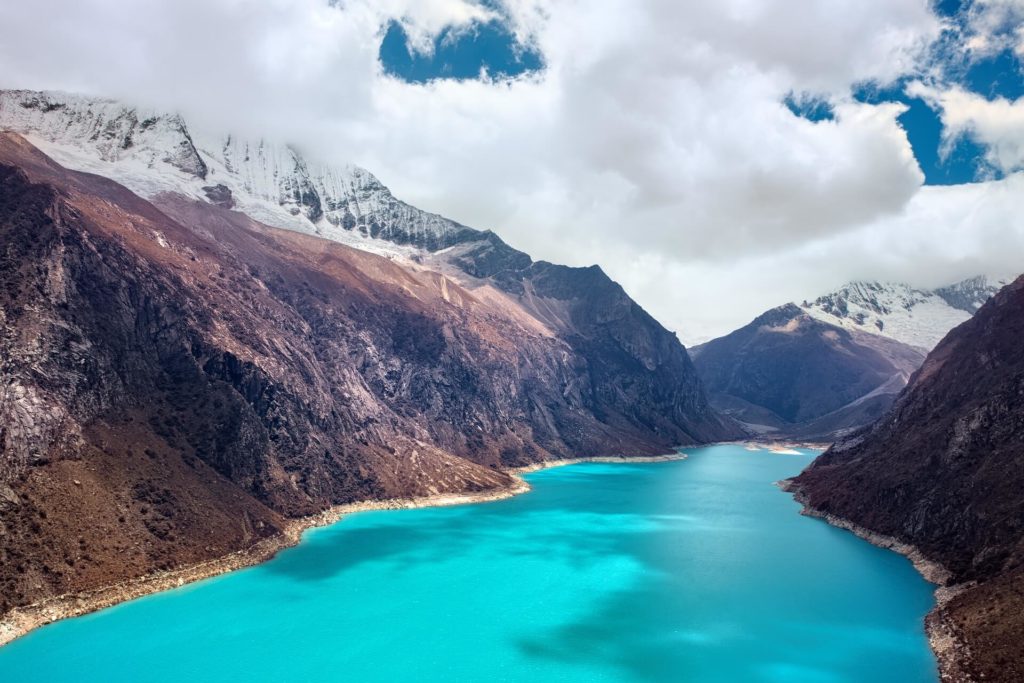 Last but not least, we place an ideal place for lovers of hiking, climbing, and beautiful mountain views. The Cordillera Blanca is a mountainous area, with many valleys, lakes, and high peaks, including the highest in Peru – Huascaran.
Last but not least, we place an ideal place for lovers of hiking, climbing, and beautiful mountain views. The Cordillera Blanca is a mountainous area, with many valleys, lakes, and high peaks, including the highest in Peru – Huascaran.
Conclusion
Peru is a place with a very rich history, preserved architectural values, and beautiful natural landmarks. If you want to escape from the city noise and indulge in a vacation full of adventures, knowledge, and long mountain walks, this is definitely the right place. Don’t forget to plan enough time for your vacation here, because some of the biggest attractions are difficult to reach and time-consuming. Your efforts will surely be rewarded with unforgettable memories.





